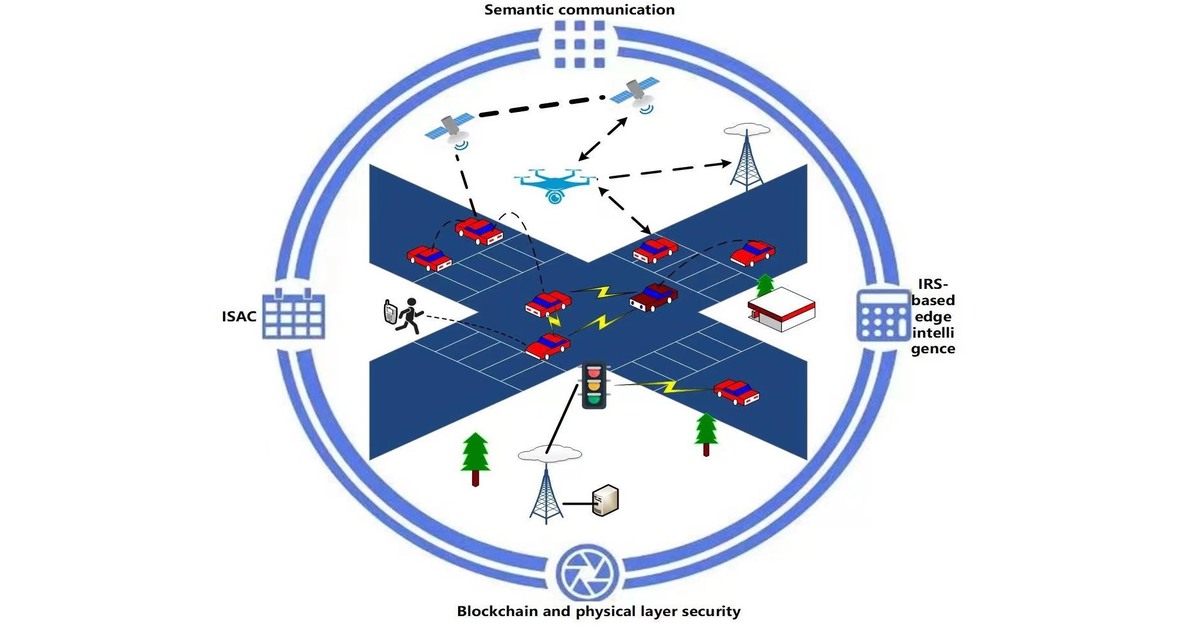Future 6G Intelligent and Secure Vehicular Networks
A special issue of Electronics (ISSN 2079-9292). This special issue belongs to the section "Networks".
Deadline for manuscript submissions: closed (15 February 2024) | Viewed by 827

Special Issue Editors
Interests: V2X; MEC; edge intelligence; computer vision; information and energy transfer technology; high-precision indoor and outdoor positioning; multiple-antenna technology
Special Issue Information
Dear Colleagues,
Intelligent and secure vehicular networks are considered one of the key application scenarios for 6G technology. The 6G vehicular network has to support ground-based vehicular communications and aerial vehicular communications, which involves additional requirements such as an end-to-end latency of 0.1ms and reliability higher than 99.99999%, as well as a data rate larger than 50Mbps. The aim of fulfilling this new demand has dramatically driven the development of many new and advanced system frameworks, algorithms, and techniques. For example, an integrated sensing and communication (ISAC) vehicular system that combines sensing with communications via the sharing of the same frequency band and hardware not only improves the efficiency of the spectrum and hardware, but also enables the communication quality of autonomous vehicles to be enhanced through the sensing functionality.
Since 6G vehicle-to-everything (V2X) communication faces complicated and changeable security challenges, higher requirements need to be guaranteed. Physical layer security is a lightweight and effective solution. As a distributed ledger, blockchain stands out due to its decentralized authentication, confidentiality, integrity, access control, anonymity, and traceability; however, it suffers from quantum attacks in 6G-V2X. Additionally, deep learning and federated learning blockchains envision data-explosive scenarios for 6G-V2X. Therefore, we are in need of advanced solutions regarding blockchain and learning-based mechanisms.
In 6G-V2X, a vehicle with various sensors may generate about tens or even thousands of gigabytes per day, including videos and images of traffic information. Although most of these data are processed in the vehicles or discarded, the amount of remaining data uploaded to roadside units (RSUs) or cloud/edge servers is still huge. However, conventional communication systems have nearly approached the Shannon capacity limit, which is the potential of semantic communication for improving both transmission efficiency and reliability for supporting end-to-end (E2E) transmission. Therefore, it is necessary to design a semantic communication architecture for 6G-V2X scenarios, as well as video and image semantic coding according to the application requirements.
The data transmission from end-user devices to the destination (connected devices, cloud and edge servers, etc.) can be interrupted due to obstacles. Integrating the edge server and the intelligent reflecting surface (IRS) in a vehicular edge computing (VEC) environment can effectively improve the communication environment and reduce the edge offloading delay. Moreover, intelligent reflecting surface-assisted key generation provides symmetric keys for the application layer.
This Special Issue focuses on intelligent and secure vehicular communications for 6G wireless networks, with the aim of bringing together researchers and industry practitioners working in related areas to share their new ideas, latest findings, and state-of-the-art results. This Special Issue solicits high-quality original research papers on topics including, but not limited to:
- ISAC-integrated vehicular systems;
- Physical layer security and blockchain;
- 6G-V2X semantic communication;
- UAV/Satellite-assisted V2X;
- IRS-aided vehicular edge computing and edge intelligence.
I look forward to receiving your contributions.
Prof. Dr. Bin-Jie Hu
Prof. Dr. Xiaohuan Li
Guest Editors
Manuscript Submission Information
Manuscripts should be submitted online at www.mdpi.com by registering and logging in to this website. Once you are registered, click here to go to the submission form. Manuscripts can be submitted until the deadline. All submissions that pass pre-check are peer-reviewed. Accepted papers will be published continuously in the journal (as soon as accepted) and will be listed together on the special issue website. Research articles, review articles as well as short communications are invited. For planned papers, a title and short abstract (about 100 words) can be sent to the Editorial Office for announcement on this website.
Submitted manuscripts should not have been published previously, nor be under consideration for publication elsewhere (except conference proceedings papers). All manuscripts are thoroughly refereed through a single-blind peer-review process. A guide for authors and other relevant information for submission of manuscripts is available on the Instructions for Authors page. Electronics is an international peer-reviewed open access semimonthly journal published by MDPI.
Please visit the Instructions for Authors page before submitting a manuscript. The Article Processing Charge (APC) for publication in this open access journal is 2400 CHF (Swiss Francs). Submitted papers should be well formatted and use good English. Authors may use MDPI's English editing service prior to publication or during author revisions.
Keywords
- 6G-V2X
- intelligent reflective surfaces
- blockchain
- machine learning
- semantic communication
- federated learning
- physical layer security
- UAV/satellite-assisted V2X
- smart radio environment
- vehicular communications,
- 6G
Benefits of Publishing in a Special Issue
- Ease of navigation: Grouping papers by topic helps scholars navigate broad scope journals more efficiently.
- Greater discoverability: Special Issues support the reach and impact of scientific research. Articles in Special Issues are more discoverable and cited more frequently.
- Expansion of research network: Special Issues facilitate connections among authors, fostering scientific collaborations.
- External promotion: Articles in Special Issues are often promoted through the journal's social media, increasing their visibility.
- Reprint: MDPI Books provides the opportunity to republish successful Special Issues in book format, both online and in print.
Further information on MDPI's Special Issue policies can be found here.






